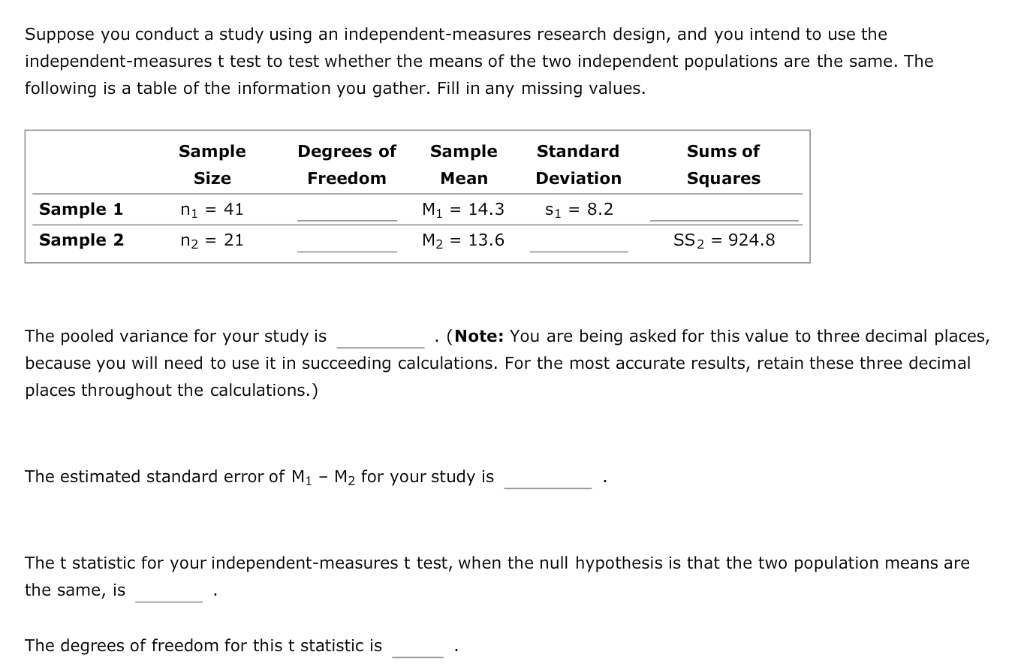


To determine which of the two formulas to use, we first test the null hypothesis that the population variances of the two groups are equal. One is appropriate if the population variances are equal, and the other is to be used if we cannot assume that they are equal. There are two formulas used to estimate the standard error of the difference in means. Estimating the Standard Error of the Difference Between Means Again, if the absolute value of the calculated t-statistic is larger than the absolute value of the critical value of t, the null hypothesis is rejected.

The two populations from which the data are sampled are each normally distributed.Īs with the one-sample t-test, the t-statistic calculated using the above formula is compared to the critical value of t (which can be found in the t table using the df and a pre-specified level of significance, α).In the cholesterol example, we might wish to compare the average age of subjects who had coronary events by 1962 to the average age of subjects who did not have a coronary event by 1962. Now we wish to compare two independent groups with respect to the mean of an analysis variable. In the previous module, we discussed the one sample t-test, which compares the mean of one sample to a predetermined constant, and the paired t-test, which compares the mean difference between two variables in a single sample.


 0 kommentar(er)
0 kommentar(er)
